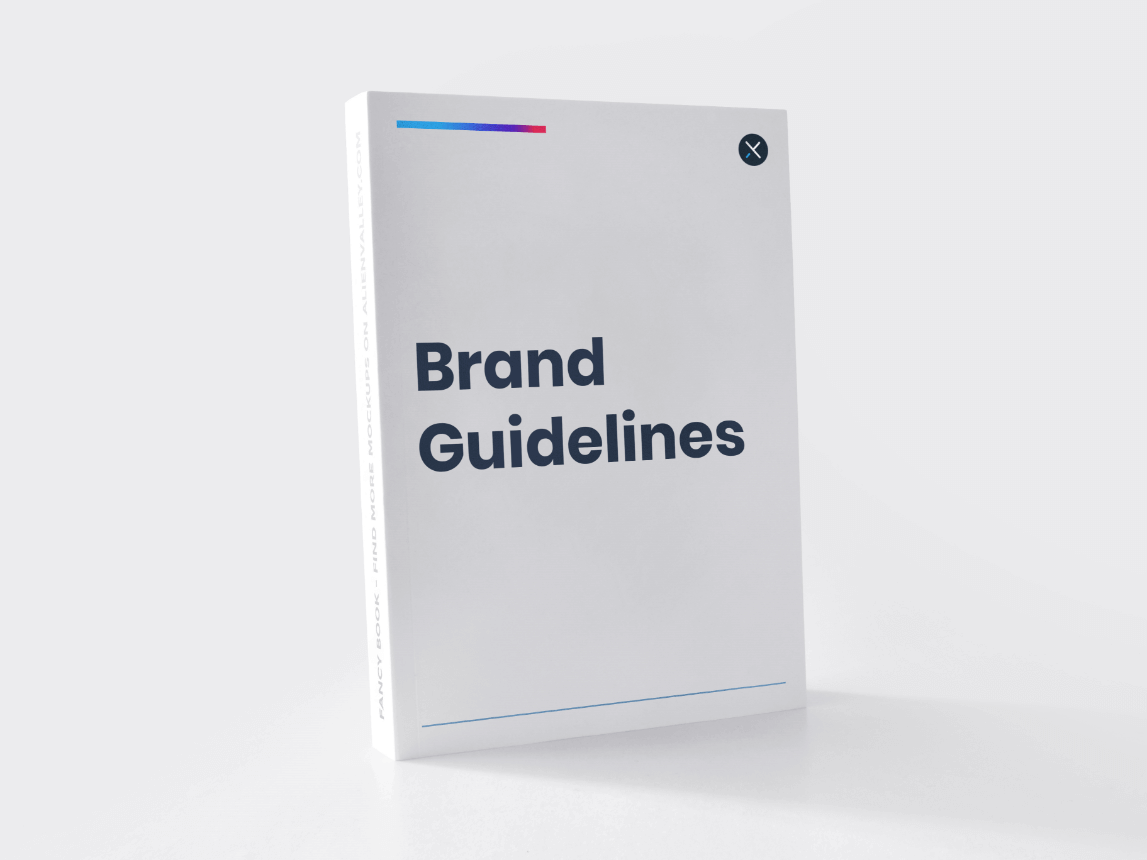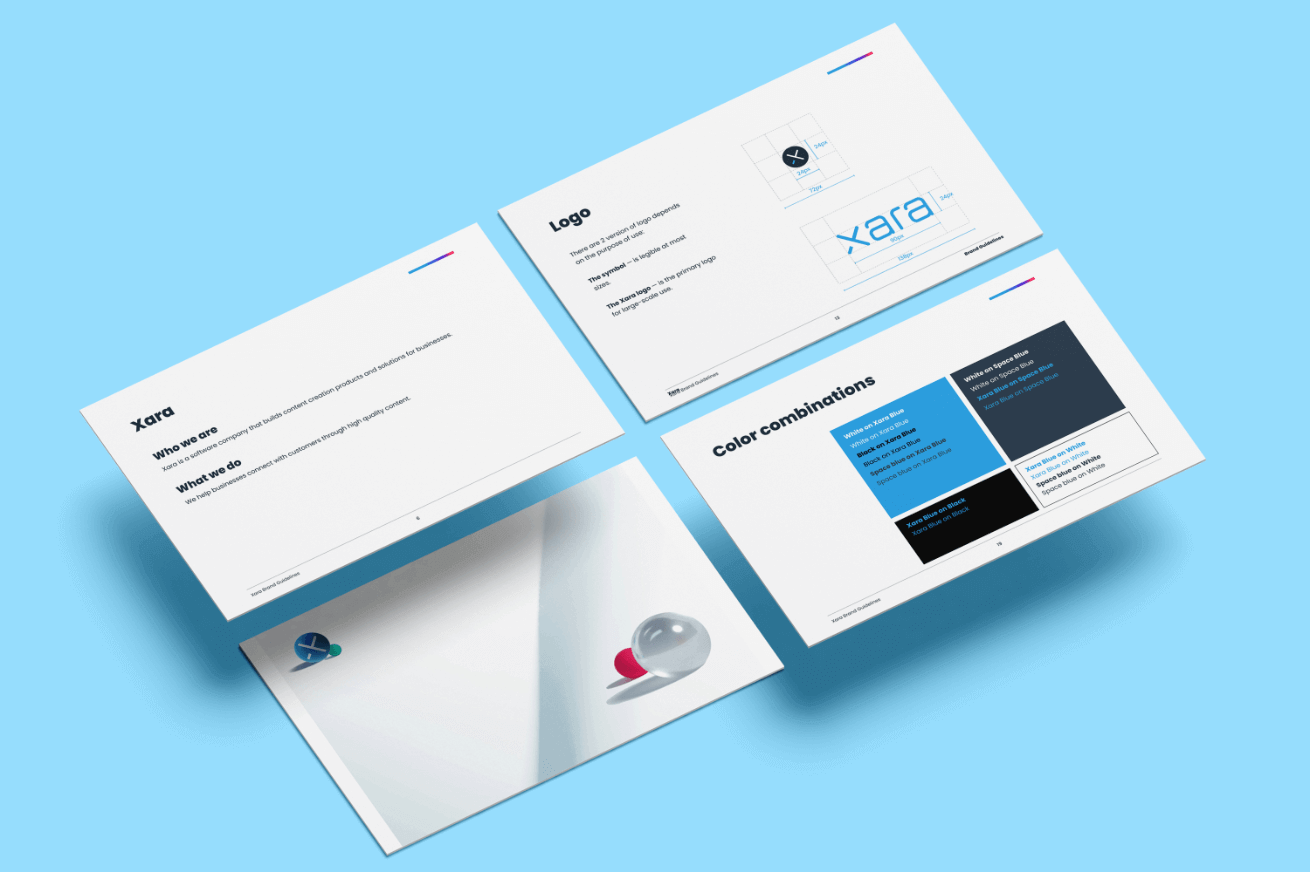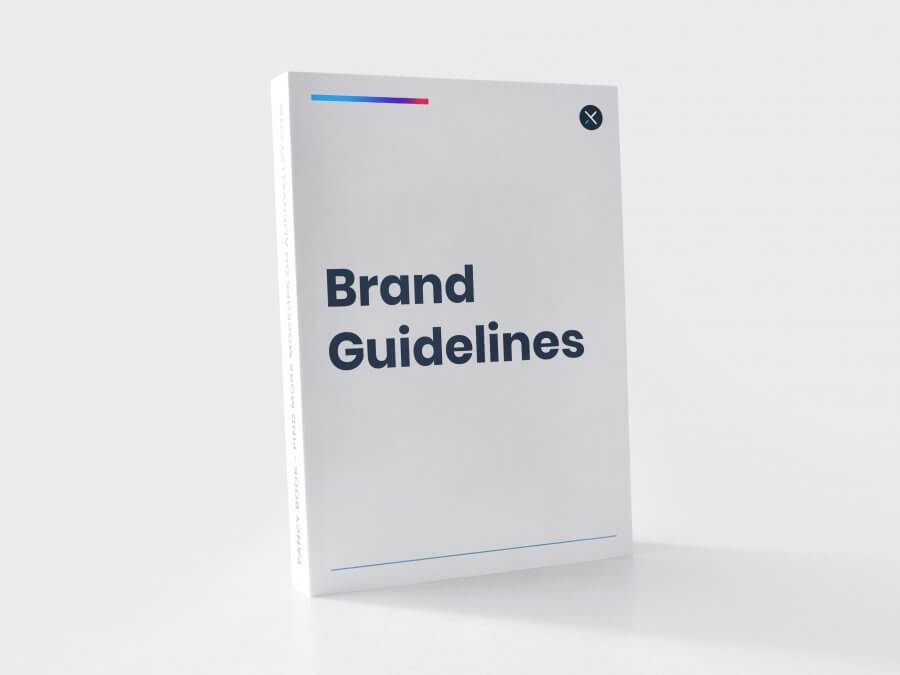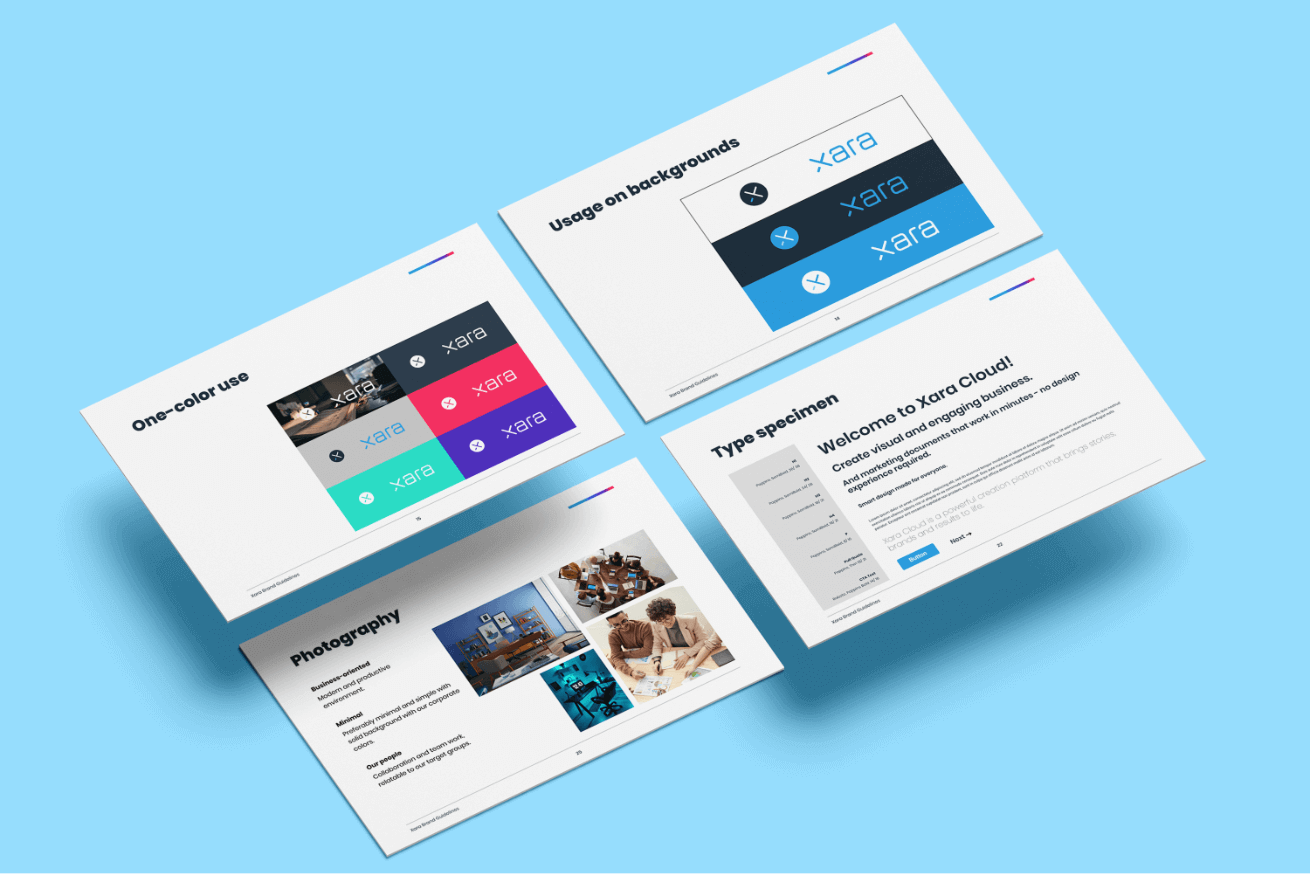
3 min read
In life, good style gets noticed. It turns heads and generates good first impressions. It diminishes resistance and creates more positive associations. It also helps one become more approachable and attractive in the eyes of others. In business, good style allows companies to lead with vision, not features, and actually stand out among competitors. But how can they achieve this consistently and at scale? It all starts with a brand style guide.
A comprehensive brand style guide allows companies to make an imprint on the market by documenting the characteristics of each branding element — including logo, fonts, images, or colors. As a result, graphic designers, marketers, developers, or third-party agencies working with the brand will have all the information they need in order to communicate the brand consistently, across channels and verticals.
Getting it right implies understanding the purpose of your brand style guide and the elements you should include in order to drive this purpose forward and make it successful. Let’s begin!
What Is a Brand Style Guide?
When you think of the most recognizable brands out there, you might notice a recurring pattern. They have consistency across messaging, both visual or written, and this helps them get recognized. They use the same brand colors and brand taglines across channels, and the language strikes a familiar chord. All the elements seem coordinated but not in a rigorous way.
When you see the order in the branding chaos, it’s usually achieved with a brand style guide or brand guidelines. It is responsible for the look-alike take on all branding elements and it is central to the composition and design of a company’s branding. There are several brand style guide examples out there, but most start from the basic branding elements that each company needs to stand out.
The elements of a Brand Style Guide
- The mission statement
Just as the name suggests, the mission statement is usually a sentence or a short paragraph that explains the purpose of a company. Because it is central to the company’s goals and identity, the mission statement should also guide every piece of content you put in front of your audience and respond to customers’ needs. The mission statement must be present in the brand style guide in order to inform your messaging, including your blog posts, ad copy, brand tagline, or visual elements. - Buyer Persona
The buyer persona depicts your ideal customer profile. The more detailed you are in this semi-fictional representation, the more insights you will get into your product, branding strategy, and future customer base. This representation is based on hard data like customer demographics, behavior patterns, and objectives, that’s why it’s not 100% fictional. It could be extended to gender, job title, or professional status. - Editorial Guidelines
Editorial guidelines dictate the grammar style and usage rules your content abides by. You could use the AP Stylebook, the Chicago Manual of Style, or the MLA Handbook. No matter your choice, it should be consistent across all written content — social media posts, articles, emails, public relations, or website copy. You could also include stylistic considerations regarding the tone of voice of your brand, fixed phrases, topics to approach in your editorial calendar, or even words or brands you should avoid mentioning. - Color Palette
As you know, the color palette should be present in the visual elements you choose to communicate your brand. Once your brand colors have been defined, document the HEX or RGB codes in the brand style guide. This way, you’ll never deviate from the colors you choose and you’ll get a consistent look all around. For extra clarity, use the brand style guide to specify how each color should be used and in particular elements in particular. Some colors might apply to your logo, others to your website, or blog design. You should also consider the sales and marketing collateral and the colors you want to use there. - Logo
Your brand style guide should dictate the way your logo will be used. This means outlining the amount of space around your logo, also known as the “exclusion zones,” to help it stand out. You could also include common mistakes when representing your logo, so designers know what to avoid, and what are acceptable color variations. - Typography
You know that typography means more than just fonts. Your brand style guide informs you where to use each font, at what size, weight, or case. For example, you can mention bold for headers, regular for body copy, and if you prefer title case to sentence case.This extends to all visual aspects, from your blog articles, brand tagline, or brand logo. They could all come in different fonts but their use needs to be documented accordingly. - Imagery
Imagery is important, especially with the rise of social media marketing, so you will want to provide some direction on the matter. In this sense, you should determine whether you want to use photography or illustrations.If you opt for photography, how will the subjects stand in relation to the camera? Will they stare at the objective or look at each other? What kind of lighting will you choose? Similarly, if you opt for illustrations, what is the overall look you will convey? What are the main colors to use? The answers to these questions should be included in the brand style guide in order to achieve a cohesive look for your imagery.
Leading with a Brand Style Guide
You put a lot of effort into your branding elements. From designing your logo to establishing your brand typography or tagline, it’s been a long and intricate process. Naturally, as more stakeholders contribute to your branding efforts, what was established during a brainstorming meeting a couple of months ago might fall through the cracks.
If you lead with a brand style guide, you have the bigger picture that will ultimately inform all branding decisions moving forward. You can start from a simple brand style guide, and expand along the way as several other needs arise. It would be good to start from a generic brand style guide template that you can customize according to the specific needs of your brand.
The Xara branding hub
Whether you want to grasp the basics of branding for your new business, want to work on your brand strategy, are stuck with your brand visuals or want to find branding tips on how to grow your business, check out:
- Foundations — Learn the basics of branding
- Strategy — Plan your brand strategy
- Build Story — Build a brand 1: Your brand story
- Build Visuals — Build a brand 2: Your brand visuals
- Management — Control your brand: Brand management
- Growth — Grow your brand: Brand marketing
- Improvement — Improve your brand: The rebrand
- Measurement — Measure your brand: Brand analytics and KPIs


